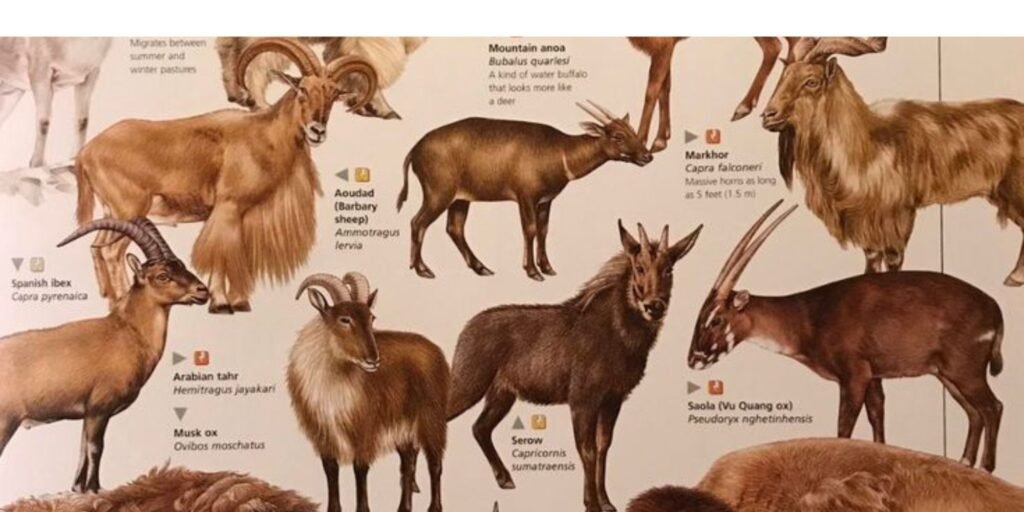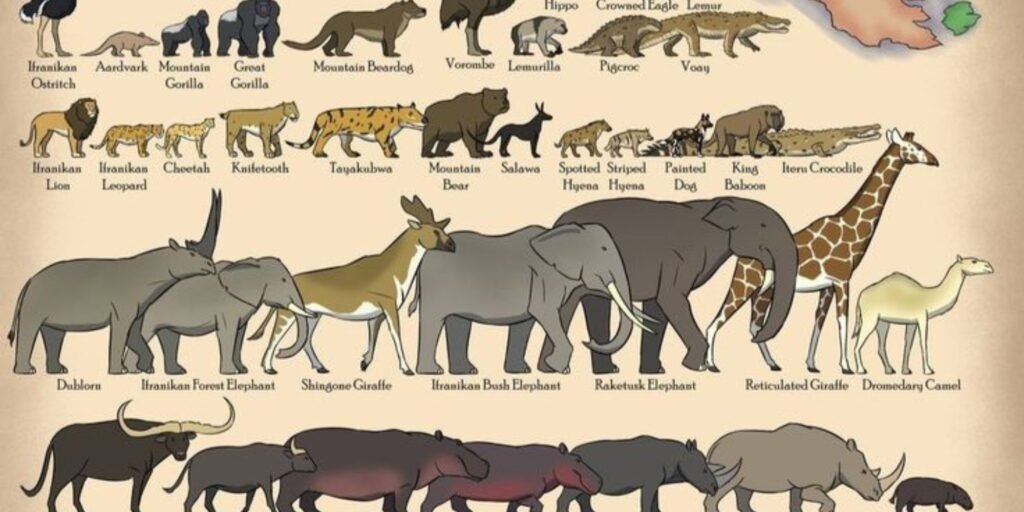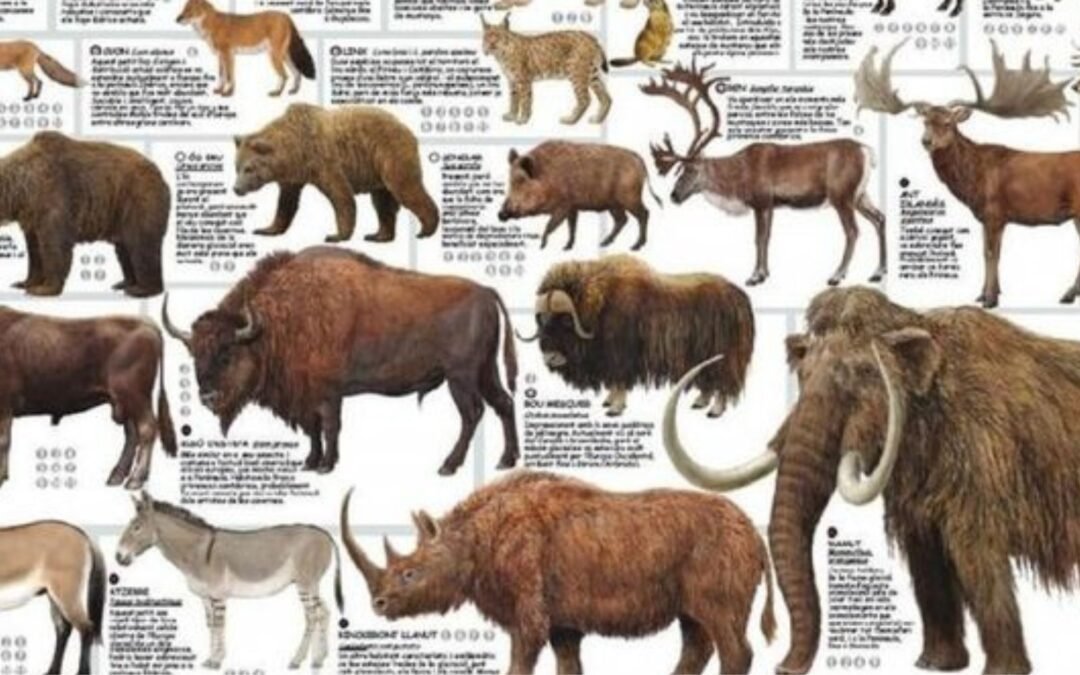When we classify organisms in biology, we often use terms like autotrophs and heterotrophs to help us understand how they obtain energy and nutrients. These classifications are essential for distinguishing between organisms that produce their food and those that must consume other living things. In this article, we will explore the question: Are carnivorous mammals autotrophs or heterotrophs?
To answer this, it’s crucial to understand the terms “autotroph” and “heterotroph” in detail. Autotrophs are organisms that can produce their food, while heterotrophs are organisms that must rely on other organisms for their nutrition. As we examine the feeding habits of carnivorous mammals, we will uncover why they are classified as heterotrophs and explore the physical and behavioural traits that help them thrive in their roles as meat-eaters.
What Are Autotrophs and Heterotrophs?
Autotrophs: The Self-Sustainers
Autotrophs are organisms that can produce their food using inorganic substances. This process typically involves photosynthesis in plants or chemosynthesis in certain bacteria. Through photosynthesis, plants convert carbon dioxide, water, and sunlight into glucose, which provides them with the energy they need to grow and survive.
Some autotrophs, like plants, are primary producers in ecosystems, as they form the base of the food chain.
Heterotrophs: The Consumers
Heterotrophs, on the other hand, cannot produce their food. They depend on other organisms to provide them with the energy they need for survival. Heterotrophs are further categorized into herbivores (plant-eaters), carnivores (meat-eaters), omnivores (those that eat both plants and animals), and scavengers (those that feed on dead organisms).
Heterotrophs can be found at various levels in the food chain. Depending on their role in the ecosystem, they range from primary consumers (herbivores) to secondary and tertiary consumers (carnivores).
Why Carnivorous Mammals Are Heterotrophs
Feeding Habits of Carnivorous Mammals
Carnivorous mammals are clearly heterotrophs because their diet consists primarily of meat, which they obtain by hunting, scavenging, or both. These animals play an important role as secondary or tertiary consumers in their respective ecosystems.
Unlike autotrophs, which create their food, carnivorous mammals must find their food. They cannot produce energy from sunlight, carbon dioxide, or water. Instead, they obtain nutrients and energy by eating other animals, which are often herbivores or other carnivores. In this way, carnivorous mammals rely on consuming other organisms to fuel their bodies and support their energy needs.
Examples of Carnivorous Mammals
- Lions: As apex predators in the African savanna, lions rely on hunting large herbivores like antelopes, zebras, and buffalo. They are highly skilled hunters who often work in coordinated groups or prides to capture prey.
- Tigers: Tigers are solitary predators that primarily hunt large herbivores such as deer and wild boar and even smaller carnivores like leopards. They rely on their stealth and strength to stalk and overpower their prey.
- Wolves: Wolves are social carnivores that hunt in packs. They target large herbivores like deer and moose, and by working together, they can take down animals much larger than an individual wolf could handle alone.
These examples show that all of these carnivorous mammals depend on other animals for their food, confirming their status as heterotrophs.
Characteristics of Carnivorous Mammals
Carnivorous mammals possess specific physical and behavioural traits that make them successful predators. These traits are fine-tuned to help them locate, capture, and consume their prey.
Physical Traits for Hunting
- Sharp Teeth: One of the most distinctive features of carnivorous mammals is their sharp, pointed teeth. These include the carnassial teeth, which are specialized for cutting and tearing meat. These teeth are crucial for breaking down the flesh and bones of prey.
- Claws and Paws: Most carnivorous mammals have sharp claws that aid in capturing and holding onto prey. For example, big cats like lions and tigers use their retractable claws to grip and immobilize their prey.
- Keen Senses: Carnivores often have enhanced sensory abilities, such as excellent vision, acute hearing, and a strong sense of smell. These traits allow them to detect prey from a distance and track them effectively. For instance, wolves rely heavily on their keen sense of smell to locate prey, while big cats like cheetahs have sharp vision to spot potential meals from afar.
- Powerful Limbs and Muscles: Carnivorous mammals typically have strong limbs and muscles designed for running, pouncing, or wrestling with prey
How Carnivorous Mammals Behave in Their Environments
Carnivorous mammals display a range of behaviours tailored to their hunting strategies. These behaviours help them secure food and survive in often competitive environments.
Solitary vs. Pack Hunters
Some carnivorous mammals are solitary hunters, while others hunt in packs. Their behavior is shaped by their social structure and the type of prey they target.
- Solitary Hunters: Species like tigers, leopards, and polar bears hunt alone. These animals rely on stealth and individual strength to catch prey. Solitary hunters usually target animals they can overpower on their own, such as smaller ungulates or fish.
- Pack Hunters: Wolves, African wild dogs, and lions are examples of pack hunters. By hunting in groups, these animals can take down larger prey that would be too difficult for a single animal to capture. Pack hunting involves a high level of coordination and cooperation, with individuals working together to surround and exhaust their prey.
Hunting Strategies
The hunting strategies of carnivorous mammals vary depending on the species and the environment in which they live.
- Ambush Predators: Some carnivores, like crocodiles and leopards, wait in ambush to capture their prey. They remain hidden, using their camouflage to blend into their environment. When an unsuspecting animal comes near, they strike quickly.
- Chasing Predators: Cheetahs and wolves are examples of carnivores that chase down their prey. Cheetahs use their incredible speed to run down antelopes and other prey, while wolves rely on stamina and teamwork to exhaust larger animals during a chase.
- Scavengers: Some carnivores, like hyenas and vultures, are primarily scavengers. They feed on the remains of animals killed by other predators. Scavengers play an important ecological role by cleaning up carcasses and recycling nutrients in the ecosystem.
The Role of Carnivorous Mammals in the Ecosystem
Carnivorous mammals play a critical role in maintaining ecosystem balance. Their feeding habits have a profound effect on the populations of other species, and their predation helps maintain biodiversity.
Maintaining Ecological Balance
Carnivorous mammals regulate the population of herbivores and other animals in their ecosystems. By preying on weaker or older individuals, they help ensure that only the fittest members of prey populations survive and reproduce. This contributes to the health of animal populations and prevents overgrazing of plants.
For example, in ecosystems like the African savanna, lions control the population of herbivores like zebras and antelopes. This allows vegetation to regenerate, providing food and shelter for other species in the area.
Apex Predators and Trophic Cascades
Many carnivorous mammals, such as wolves, tigers, and lions, are apex predators in their environments. As apex predators, they sit at the top of the food chain and have few natural predators. Their presence helps regulate populations of other species, leading to what’s known as a trophic cascade. This term refers to the way top predators influence lower trophic levels in the food chain, leading to significant changes in the ecosystem.
The Daily Routine of Carnivorous Mammals

Carnivorous mammals’ daily routines are structured around their need to hunt for food, rest, and maintain their territories.
Hunting and Feeding Cycles: Are carnivorous mammals autotrophs or heterotrophs
Carnivorous mammals’ daily routine revolves around hunting or scavenging for food. The frequency of meals depends on the size of the prey and the energy needs of the individual animal. For example, a lion may hunt once every few days, while a cheetah may need to hunt daily to sustain its high-energy lifestyle.
After a successful hunt, carnivores often engage in feeding frenzies. They will consume as much as possible in one sitting, knowing that they may not eat again for several days.
Resting and Territory Maintenance: Are carnivorous mammals autotrophs or heterotrophs
Carnivorous mammals also spend significant time resting and maintaining their territories. Many species, like wolves and lions, mark their territory with scent markings or vocalizations to warn other predators to stay away. This helps protect their food supply and ensures they have a secure area to rest and recuperate.
Conclusion: Are carnivorous mammals autotrophs or heterotrophs
In conclusion, carnivorous mammals are undeniably heterotrophs. These animals cannot produce their own food. Instead, they must consume other living organisms—typically other animals—to acquire the energy and nutrients required for survival. This classification as heterotrophs is based on their reliance on external sources of energy. Unlike autotrophs, such as plants that produce their own food through photosynthesis, carnivorous mammals depend entirely on hunting, scavenging, or feeding on other animals.
Adaptations for a Predatory Lifestyle: Are carnivorous mammals autotrophs or heterotrophs
Carnivorous mammals are specifically adapted to hunt and consume meat. Their sharp teeth and claws are essential tools for capturing, tearing, and breaking down prey. These physical traits are perfectly suited to their role as predators. Additionally, their keen senses—whether it be the exceptional vision of a cheetah or the acute sense of smell in wolves—further enhance their hunting abilities. These adaptations enable them to successfully locate, track, and overpower their prey.
Moreover, their behavioral strategies also reflect their role in the ecosystem. Carnivorous mammals may hunt solitarily, relying on stealth, speed, or strength to capture prey. Others, like wolves and lions, hunt in packs, coordinating efforts to bring down larger or more challenging prey. These strategies ensure that carnivorous mammals can sustain themselves and thrive in various ecosystems, maintaining balance within their food chains.
Ecological Importance of Carnivorous Mammals: Are carnivorous mammals autotrophs or heterotrophs
Beyond their role as consumers, carnivorous mammals are critical to ecosystem health. As apex predators, they help regulate the populations of herbivores and smaller carnivores. By preying on weaker, slower, or ill individuals, they ensure that only the fittest members of prey populations survive. This not only keeps prey populations in check but also contributes to the overall strength and diversity of animal species.
In addition, carnivorous mammals play a significant role in controlling the spread of diseases. By targeting weak individuals, they reduce the likelihood of disease transmission within prey species. Their presence in ecosystems promotes healthier, more balanced wildlife populations.
Final Thoughts: Are carnivorous mammals autotrophs or heterotrophs

To sum up, carnivorous mammals are clearly heterotrophs, relying on other living organisms for nourishment. Their unique set of physical features, behavioral tendencies, and ecological roles firmly distinguish them from autotrophs. Whether they hunt alone or in packs, these mammals are essential to the stability and health of their environments. By regulating prey populations and maintaining balance within food webs, carnivorous mammals contribute significantly to the biodiversity of the natural world. Therefore, as meat-eating organisms that must consume other living beings to survive, they are a definitive example of heterotrophs, separate from the self-sustaining autotrophs.

